Comparing Sentosa Cove Condos To District 9/10 Properties: How Much Cheaper Are They Today?
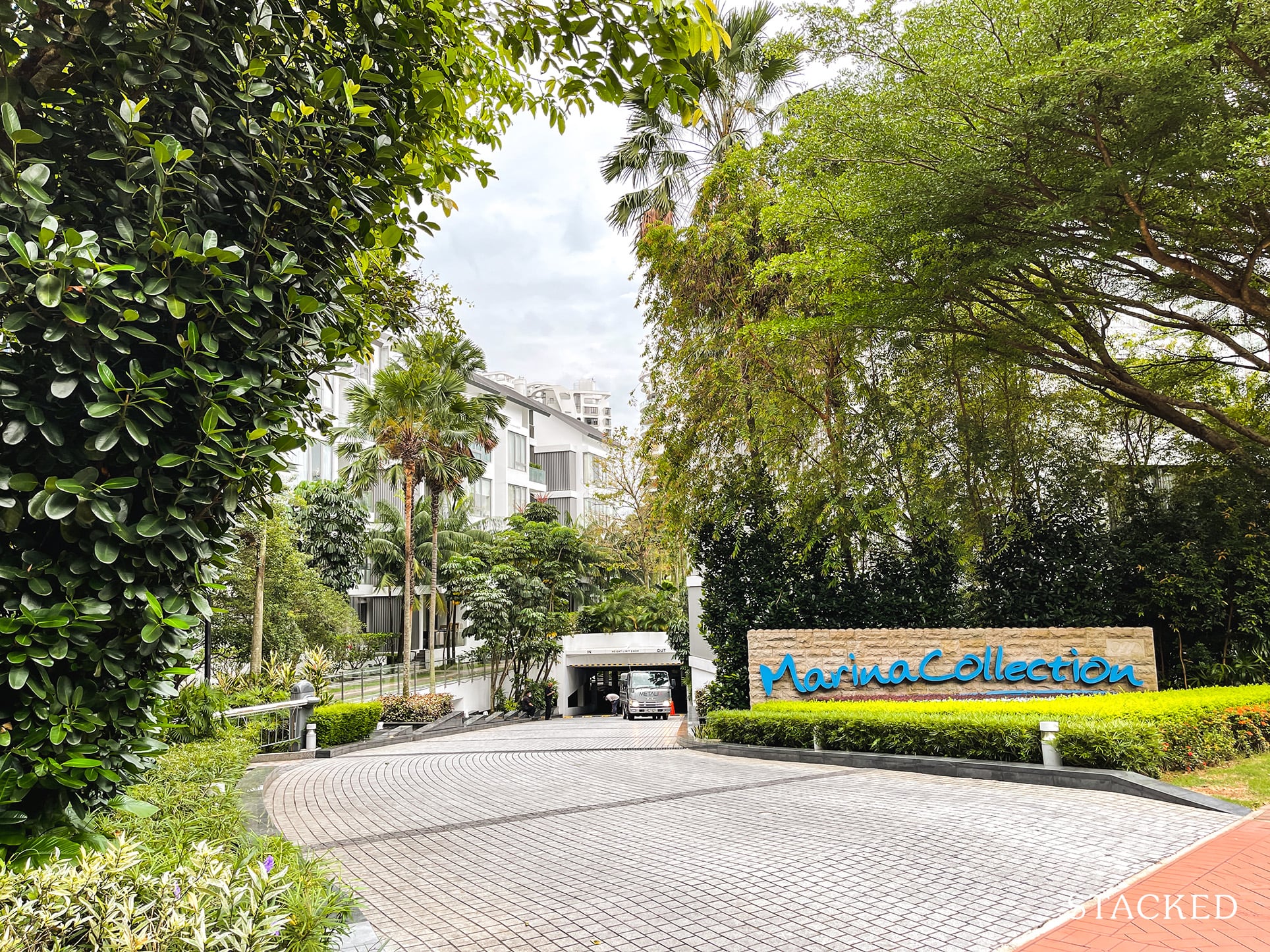
Get The Property Insights Serious Buyers Read First: Join 50,000+ readers who rely on our weekly breakdowns of Singapore’s property market.
A seasoned content strategist with over 17 years in the real estate and financial journalism sectors, Ryan has built a reputation for transforming complex industry jargon into accessible knowledge. With a track record of writing and editing for leading financial platforms and publications, Ryan's expertise has been recognised across various media outlets. His role as a former content editor for 99.co and a co-host for CNA 938's Open House programme underscores his commitment to providing valuable insights into the property market.
The resurgence in Sentosa Cove condos, in August this year, is one of the more unexpected events in the property market. Besides a decade of decline, the combination of ABSD and weak rental prospects offered no silver lining. Despite this, transactions have seen a sharp recent spike. We keep hearing the reason is the price decline over the years, which now makes the area palatable; so we did a quick comparison to see how low it’s really gotten:
What is happening at Sentosa Cove right now?
Sentosa Cove has had an unusually good year, with 103 transactions between January to mid-August. 85 of these were for non-landed properties, and 18 for landed; this is already an 84 per cent increase in volume from last year (43 condos and 13 landed previously).
We’ve actually been keeping an eye on Sentosa Cove (the landed side at least), since the start of the year; and as we mentioned in the earlier article, Sentosa Cove has trended downward in price and volume for around a decade at this point.
It was expected that at some point, it would be attractive enough for buyers to move back in. We didn’t think, however, that it would happen this soon; or that it would happen during Covid-19 of all times.
How much cheaper is a Sentosa Cove property, exactly?
As Sentosa Cove is a luxury area, it makes more sense to compare it to similar districts, with similar property types. As such, we’ve compared it against Districts 9 (Orchard) and 10 (Holland, Bukit Timah).
We’ve compared this over a period from the start of 2016, to around the present (nearing the end of August). We’ve kept comparisons to resale transactions only, to avoid skewed data from new launches, and based it on median price psf.
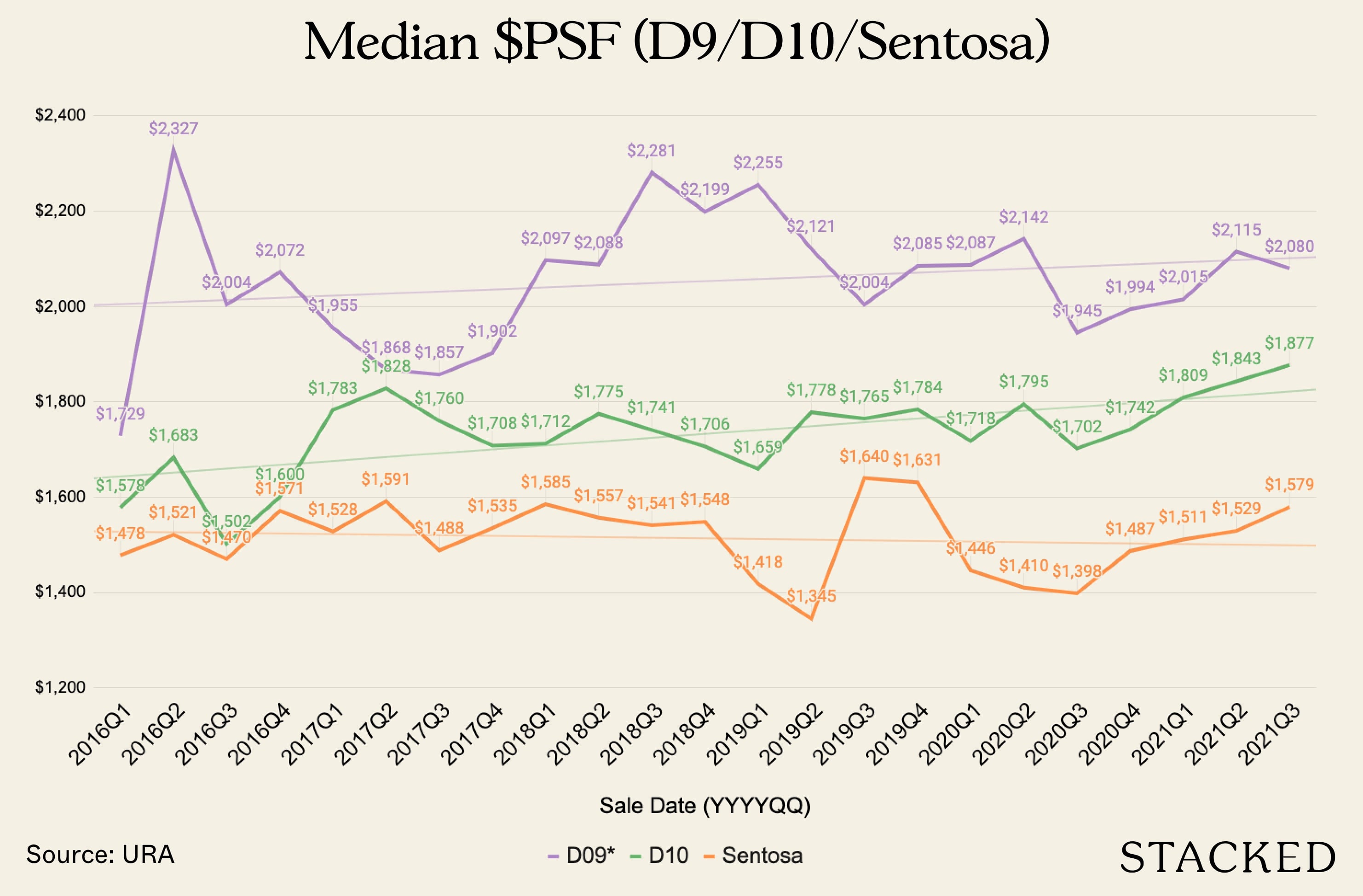
To put Sentosa’s median price of $1,579 psf in context, consider that – back in 2007 – buyers of developments like Turquoise would have paid over $2,600 psf. Today, recent purchases here have gone as low as $2.74 million, for a massive 2,088 sq. ft. unit (that’s nearly half off, if you’re keeping tabs).
The lack of new developments in Sentosa Cove is also a possible factor
New launch developments are always priced higher than existing counterparts. However, this has a knock-on effect, and eventually helps to pull up prices of surrounding resale units as well.
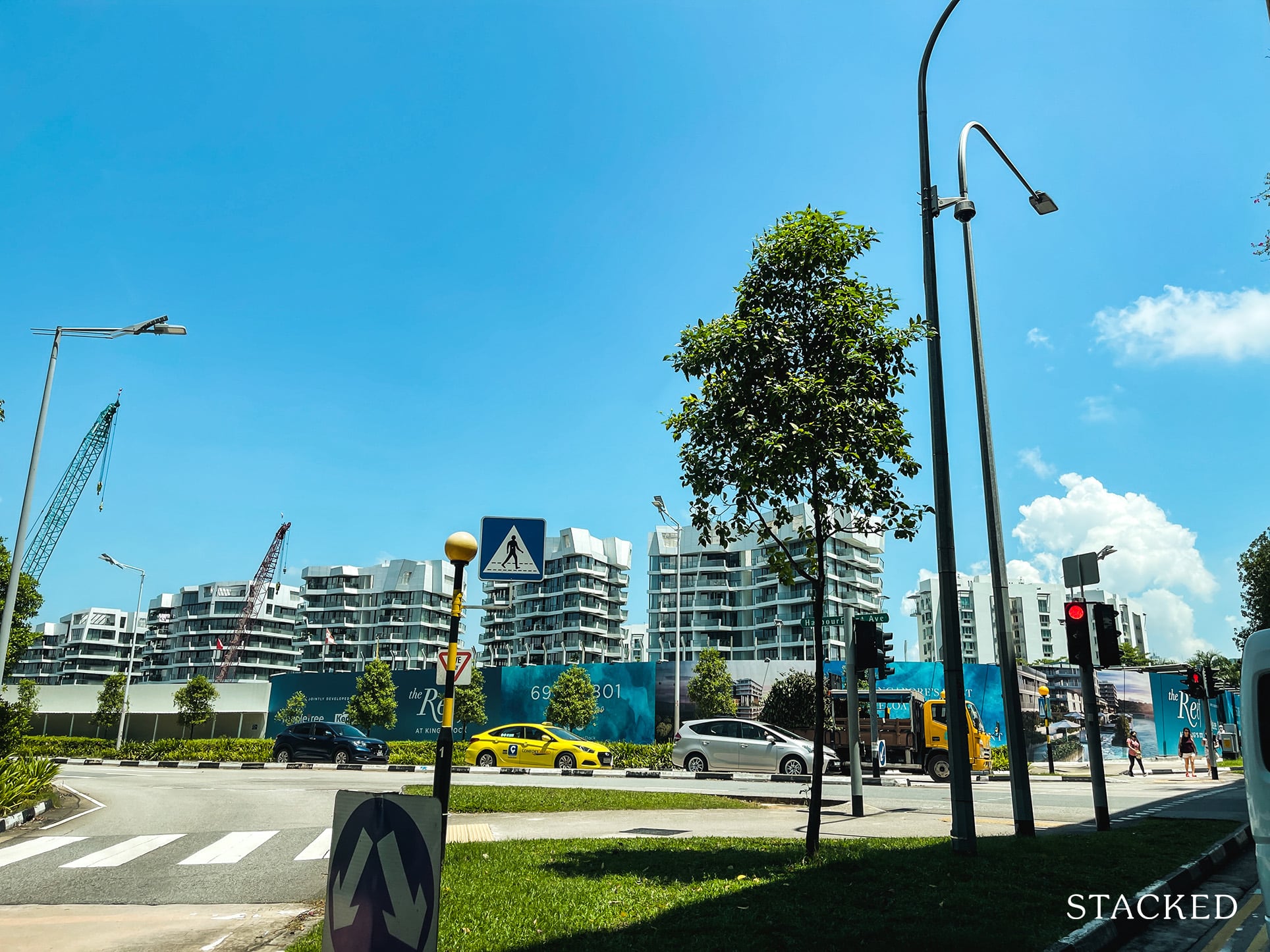
Sentosa Cove proper has not seen a new launch, for many years (while there have been new launches in District 4, these have mainly been around the HarbourFront area).
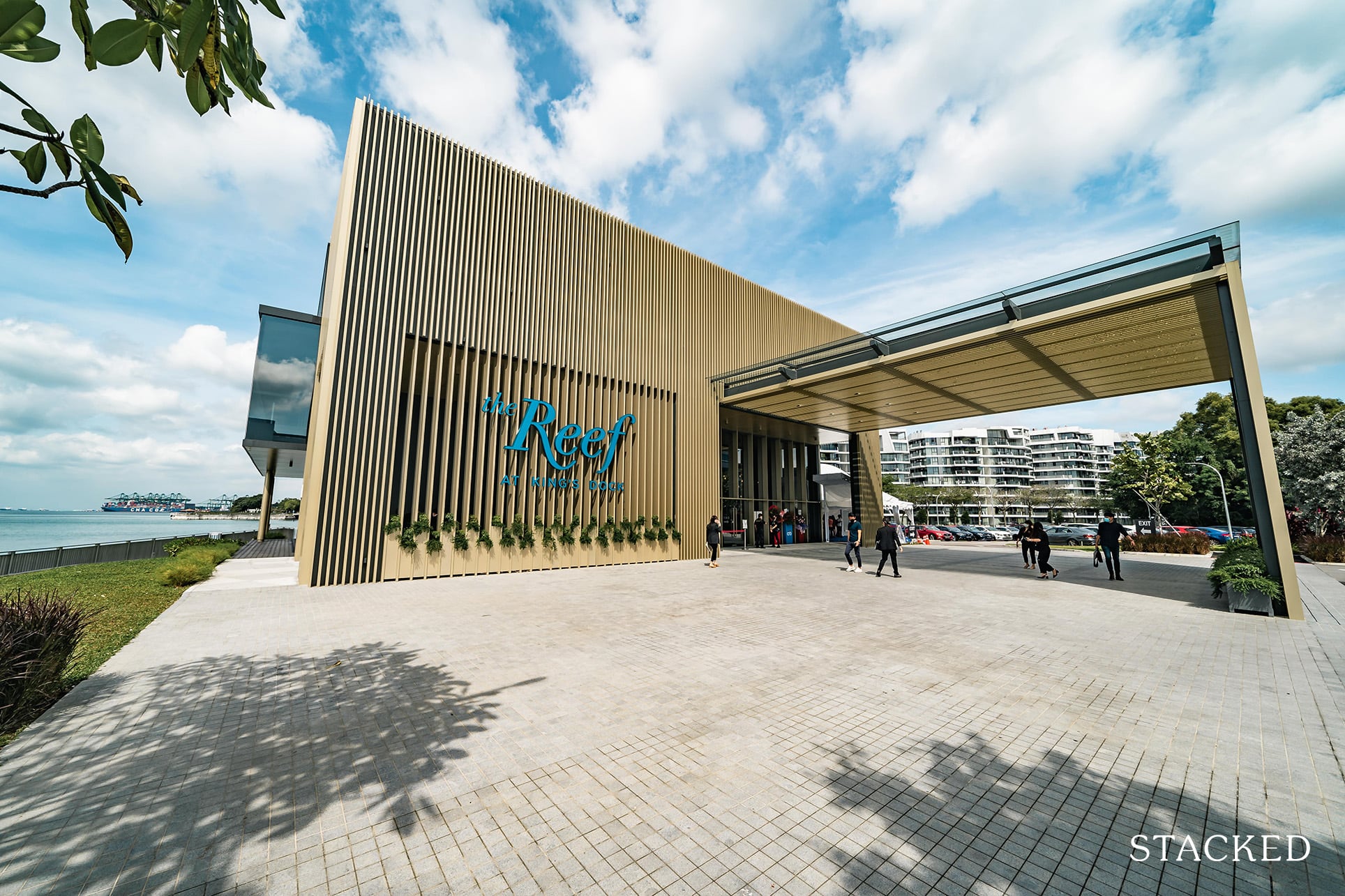
New Launch Condo ReviewsThe Reef At King’s Dock Review: Singapore’s First Condo With A Floating Deck
by Matthew KwanNonetheless, some realtors will position this as an advantage. They will point out that there’s little room for more new launches, and this means there’s less competition in terms of resale or rental. We’re uncertain of how true this is – it may be relevant to mass market condos, but in our experience, luxury property seldom runs into oversupply problems.
With landed homes, however, there are a mere 350 bungalows on Sentosa – and this can create scarcity value among affluent foreign buyers.
Being a purely leasehold area is still an issue for Sentosa
The graph above is for all tenure types; but we feel that Sentosa’s negative trendline, relative to Districts 9 and 10, maybe due to having only leasehold properties.
Note that when we don’t differentiate between freehold and leasehold, there is a widening gap between Sentosa and District 9 and 10 properties, in terms of price psf. But if we were to restrict comparisons to just leasehold properties, Sentosa has mostly kept pace with leasehold counterparts in Districts 9 and 10.
More from Stacked
Why Old Run-Down Malls Make Neighbourhoods Better In Singapore
The presence of these old malls explains some of my favourite places. Take the Katong/Joo Chiat stretch for instance: having…
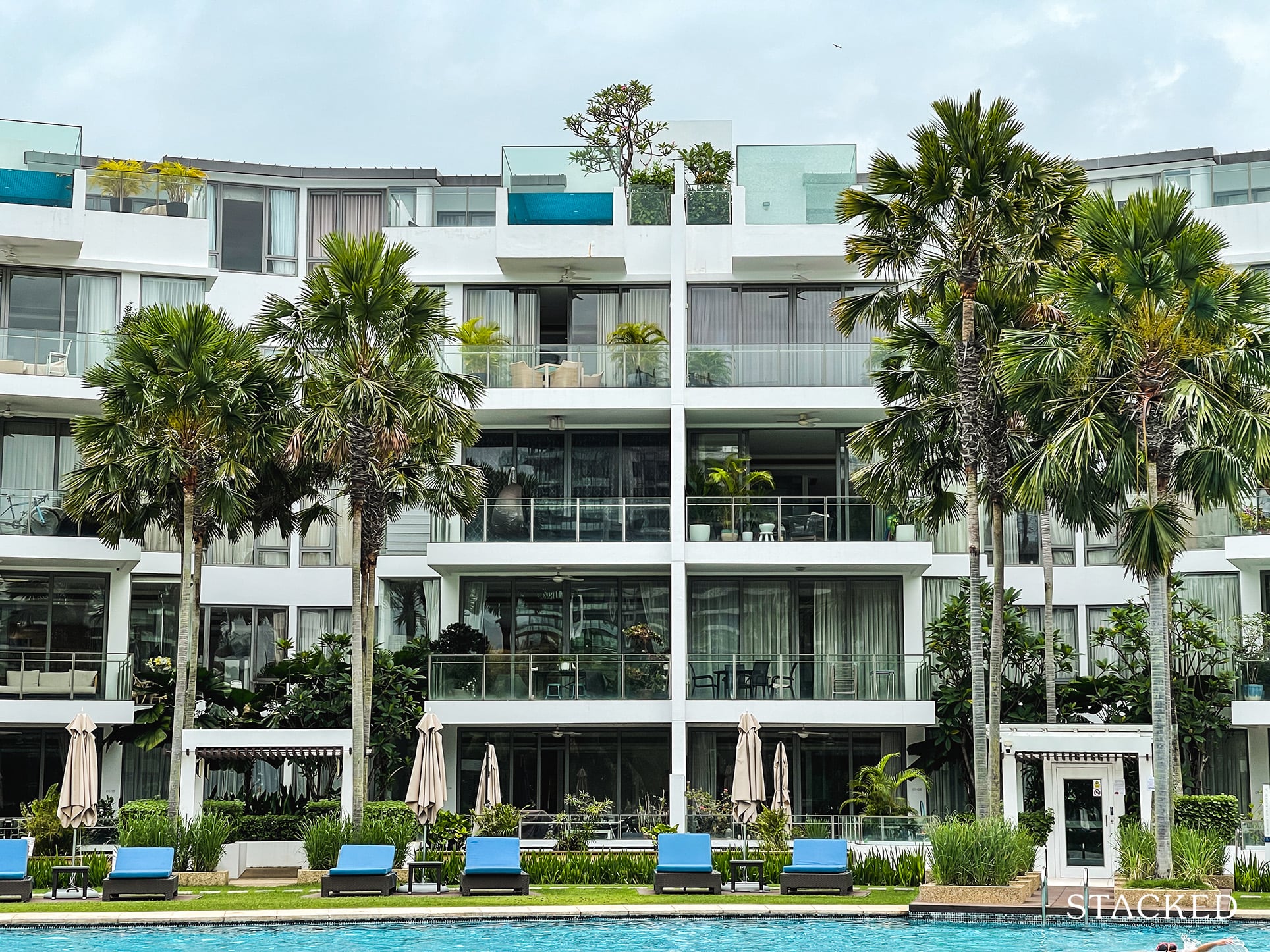
Other factors that could boost Sentosa Cove interest
The ABSD, which imposes a 20 per cent tax on foreign buyers, usually works against Sentosa Cove. However, expectations of renewed cooling measures could temporarily work in its favour.
On the ground, some realtors pointed out that foreign buyers are the first to be targeted when ABSD rises. Initial implementation of ABSD, in 2011, was 10 per cent of the price or value (whichever is higher) on foreign buyers.
By 2013, it was revised to 15 per cent. By 2018, it had risen even further to 20 per cent.
As such, many foreign investors, who have been eyeing Singapore for some time, may have decided to buy before ABSD rises again.
Note that for landed property, foreigners cannot buy on the mainland without special permission from Singapore Land Authority (SLA). Almost all their landed purchases end up in Sentosa Cove, helping to boost transaction volume.
For landed homes, most realtors we spoke to feel that demand from locals is still not high, when it comes to Sentosa Cove.
They said that Singaporeans prefer freehold landed property, which is only available on the mainland. The buyer demographic able to afford Sentosa Cove properties are more inclined toward homes like Good Class Bungalows (GCBs).
According to Realis caveats data, Singapore citizens have bought only six bungalows in Sentosa Cove, as of mid-August 2021. Most buyers have come from China, who are unfazed by 99-year leases; these buyers have similar restrictions on most properties back home.
Does this mean now is the right time to buy a Sentosa Cove home?
As a matter of pure homeowner indulgence, there are few objections to be made. If you want seafront views and golf courses, and luxury living, you’d probably pay even more for it by choosing property on the mainland.
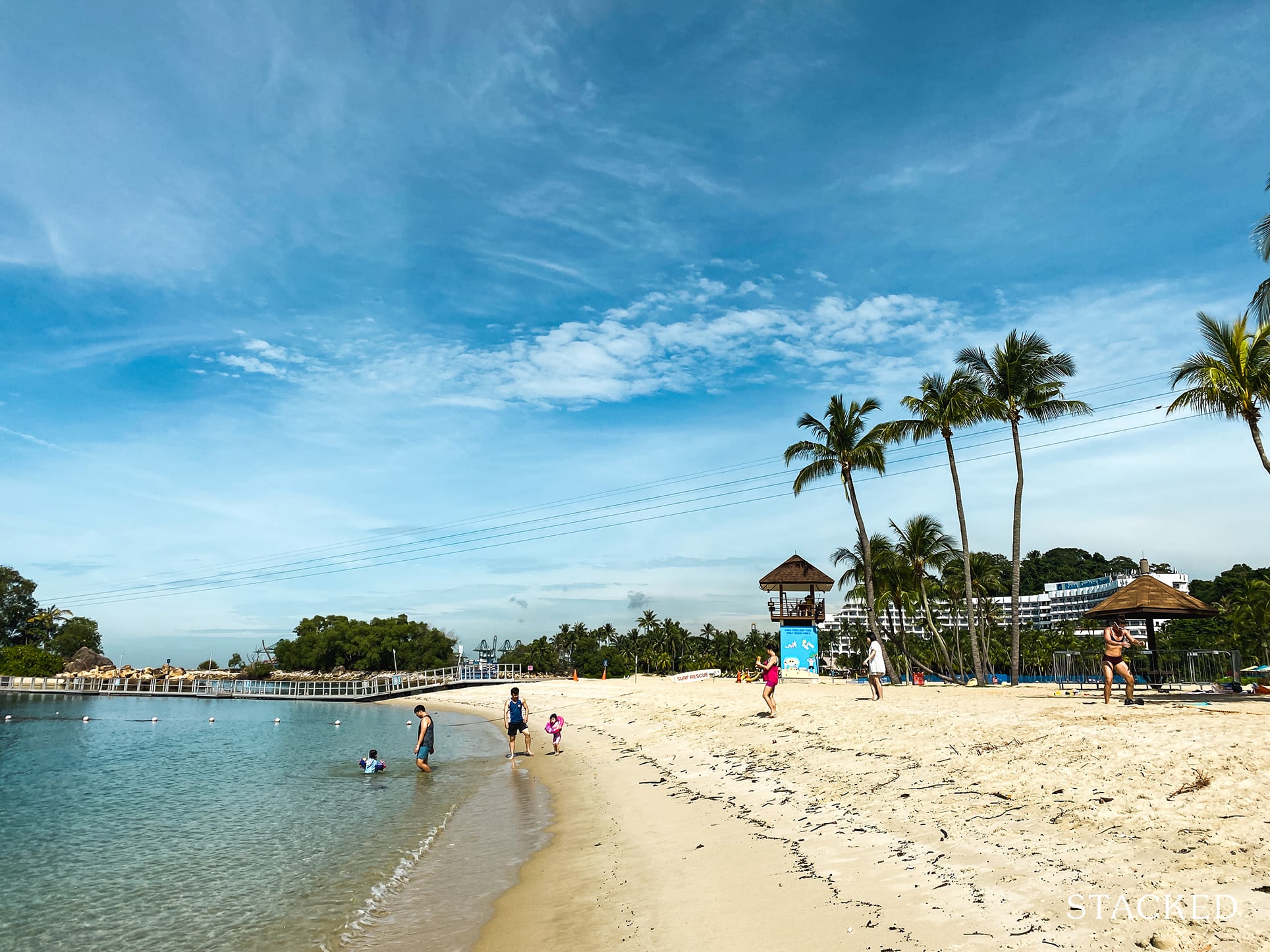
The only real drawback we see is the lower accessibility, and the fact that many day-to-day delivery services (e.g., food delivery) won’t send drivers all the way to Sentosa. This could be a real pain, while Covid-19 still rages.
As another plus point, Sentosa Cove provides home sizes that you’d be hard-pressed to find on the mainland. You’re unlikely to find many 2,000+ sq. ft. condos outside of Singapore, barring older resale units.
As an investment, however, Sentosa Cove is still seen as less of a stable one. Freehold properties in Districts 9 and 10 have demonstrated better potential for gains, and they tend to have higher rentability (even if you’re catering to wealthier tenants, don’t assume all of them like driving all the way from Sentosa Cove to the CBD).
Also, Covid-19 raises the possibility that smaller numbers of foreigners will be entering Singapore; and that even large corporations might be slashing housing allowances, depending on how bad business gets. Luxury rental properties will be the first to bear the brunt of this.
For more updates as the situation unfolds, follow us on Stacked. You can also follow us to get the most in-depth reviews of new and resale properties alike.
you’d like to get in touch for a more in-depth consultation, you can do so here.
Ryan J. Ong
A seasoned content strategist with over 17 years in the real estate and financial journalism sectors, Ryan has built a reputation for transforming complex industry jargon into accessible knowledge. With a track record of writing and editing for leading financial platforms and publications, Ryan's expertise has been recognised across various media outlets. His role as a former content editor for 99.co and a co-host for CNA 938's Open House programme underscores his commitment to providing valuable insights into the property market.Read next from Property Market Commentary

Property Market Commentary I Lived In Bayshore When It Was ‘Ulu’. Here’s How Much It Has Changed

Property Market Commentary Why The Singapore Property Market Will Be Different In 2026 — And It’s Not Just About Prices

Property Market Commentary 2025 Year-End Review Of The Singapore Property Market: What The Numbers Reveal

Property Market Commentary How The HDB Resale Market Performed In 2025, And What It Means For 2026 Prices
Latest Posts

Singapore Property News This HDB Just Crossed $1.3M For The First Time — In An Unexpected Area

Singapore Property News “I Never Thought I’d Be Sued by a Tenant.” What Long-Time Landlords in Singapore Miss

Singapore Property News HDB Resale Prices Finally Slowed in 2025 — Will It Continue in 2026?

Singapore Property News Breaking News: District 23 Condo Sells Out In Under Two Years At $2,120 Psf Average

On The Market Here Are The Cheapest 3-Bedroom Condos in Central Singapore You Can Still Buy From $1.15M

Pro This 21-Year-Old Condo Didn’t Sell Out Initially, Yet Became A Top Performer

Editor's Pick What I Only Learned After My First Year Of Homeownership In Singapore

Singapore Property News Why More Land Doesn’t Automatically Fix Housing In Singapore

On The Market Here Are The Cheapest 4-Room HDB Flats in Central Singapore You Can Still Buy From $490K

Editor's Pick Should We Buy An Old 99-Year Leasehold Condo To Live In: Will It’s Value Fall When The Lease Runs Out?

Pro How A Once “Ulu” Condo Launched In 1997 Became A Top Performer

Editor's Pick I Reviewed A New Launch 4-Bedroom Penthouse At Beauty World

Editor's Pick Why Singaporean Families Are Looking At This Landed Enclave From Around $4M

Singapore Property News Lentor’s First Condo Is Complete — The Early Profits May Surprise You

Property Advice We Own A $800K 1-Bedder And A $1.1M 3-Bedder: Is It Possible To Upgrade To A 4-Bedder Condo?


